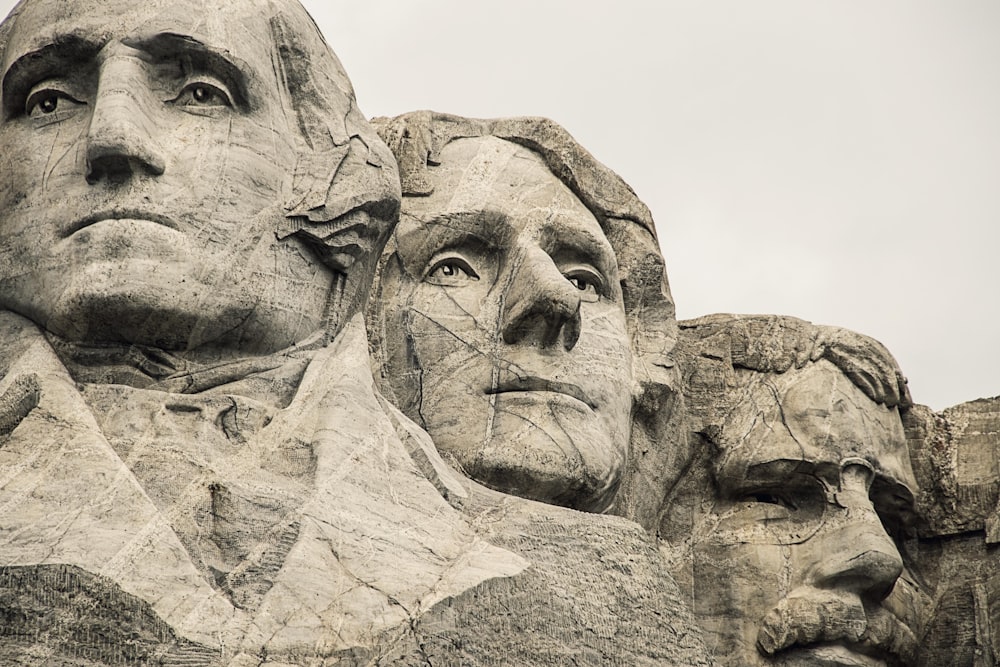
Gun advocates often proclaim that guns don’t kill people, but that people kill people. Of course, this has a kernel of truth to it while also glossing over the inherent violent potential in those guns.
That sort of truth can also be applied to any published text.
The enslavement of Black people in the U.S. was supported by citing Biblical passages among, for example, Southern Baptists.
In other words, meaning tends to be less objectively in any object and more so in the intent of those imposing meaning on that thing.
With the election of Donald Trump as the U.S. president, many in the country became more ad more concerned about the possibility of fascism and totalitarianism coming to a free people grown lazy in their consumerism.
Margaret Atwood’s The Handmaid’s Tale and George Orwell’s 1984 saw a surge in popularity among those troubled by Trump and his supporters.
During the Covid-19 pandemic, however, the U.S. is now facing another potential tipping point among free people—a renewed public uprising over police brutality disproportionately impacting Black people. The killing of George Floyd has expanded and reignited the #BlackLivesMatter movement, which has nudged the country a bit farther along in confronting its racial and racist sins often memorialized and honored in building names and statues across the country.
One of America’s literary monuments of shame is William Faulkner, considered a giant of Southern letters despite being a Southern apologist (see James Baldwin’s “Faulkner and Desegregation”). However, there is an irony in Faulkner because his precise depictions of the South prove, not Faulkner, but Baldwin correct.
In 2020, conservatives who have lined up behind Trump (and seemingly forgotten their roots in Ronald Reagan who famously demanded “Mr. Gorbachev, tear down this wall”) are rushing to defend racists whose names emblazon buildings and images stand permanently as statues of honor across the country, even as we know most of these purposeful celebrations occurred in defiance of Black liberation and full entry into our so-called free country.
Conservatives are shouting that renaming buildings and removing statues are acts of erasing history. Trump conservatives are our contemporary Emily, discovered at the end of Faulkner’s story to have been spending her nights clinging to the corpse of the lover she could not have and killed instead to hold onto forever.
This thing that has never existed, I shall hold onto always.
And in another monumental irony, these Trump conservatives are quoting Orwell’s 1984 as a warning about the current racial reckoning in the U.S. targeting monuments to racists:
“Every record has been destroyed or falsified, every book rewritten, every picture has been repainted, every statue and street building has been renamed, every date has been altered. And the process is continuing day by day and minute by minute. History has stopped. Nothing exists except an endless present in which the Party is always right.”
Here Winston is explaining to Julia how “history” is a tool of the Party, a weapon of totalitarian rule.
The problem, of course, is that in a time of memes and social media—when many people routinely post quotes that are misattributed at best and simply false at worst—most conservatives quoting Orwell have never read his work, or 1984, and have completely misread the purpose of this passage since it is taken out of context.
Southern Baptist preachers were fond of quoting every possible passage using master/slavery analogies in the Bible, decontextualized and twisted (making the metaphorical literal) to show that God endorsed a master/slave relationship.
Orwell’s fiction is anti-fascism, anti-totalitarianism, in fact, but the novel was not written as prediction; it was a dark parody of the imminent threat to freedom in Orwell’s lifetime.
This passage is no simple warning about the renaming of buildings or the removal of statues. Orwell’s narrative dramatizes for readers that history is determined by those with power. Totalitarian regimes must control history to control people.
What Trump conservatives also miss is that the call to rename buildings and remove statues is not coming from authoritarian leaders, but from the people, people recognizing that honoring racists has no place among free people.
The U.S. is an admirable idea, something beautiful to aspire to—life, liberty, and the pursuit of happiness. But Trump conservatives misread the American Dream just as they misread Orwell.
America has never yet been great for all people; American has mostly been great for a few white people at the expense of other people, often Black Americans.
Langston Hughes writes of the tension between what America can be and how it continues to fail:
O, let America be America again—
The land that never has been yet—
And yet must be—the land where every man is free.
The land that’s mine—the poor man’s, Indian’s, Negro’s, ME—
Who made America,
Whose sweat and blood, whose faith and pain,
Whose hand at the foundry, whose plow in the rain,
Must bring back our mighty dream again.
The names and statues honoring Ben Tillman, John C. Calhoun, Robert E. Lee, and countless other racists and white supremacists are monuments of shame portraying “[t]he land that never has been yet.”
Along with Langston Hughes‘s “Theme for English B” and “Let America Be America Again”—and instead of misreading Orwell—let me offer better literary commentaries on the call to remove the names and images of our racist past from Carl Sandburg and William Stafford:


Democracy is also a beautiful idea, one Americans have failed by choosing consumerism and rugged individualism over “liberty and justice for all.”
Renaming and removing the whitewashed history of our ugly past is not erasing history, but acknowledging, like Hughes and Sandburg and Stafford, that to finally build a free and equitable people, ugly things must be torn down so that we can start again.
Recommended
On Memory and History: What’s in a Name?
Dismantling Monuments: History as a Living Document
Clemson’s Tillman Hall and the Tragedy of Southern Tradition
